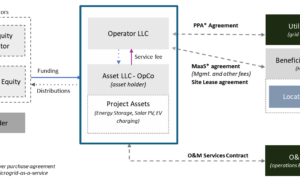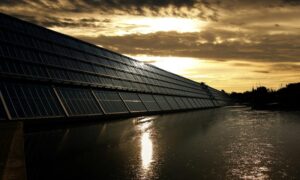Are you ready to dive into the world of renewable energy? In a time where climate change is at the forefront of global conversations, it’s crucial to understand the advantages and disadvantages of different sources of power. From solar panels glistening under the sun’s rays to wind turbines gracefully spinning in the breeze, this blog post will shine a light on renewable energy. Join us as we explore its incredible potential and uncover any challenges that lie ahead. Get ready to be inspired by innovative solutions that can reshape our planet; let’s embrace the future together!
Renewable Energy: What Is It?
Renewable energy sources, such as solar, wind, and hydropower, are becoming increasingly popular in today’s world. These sources of energy are environmentally friendly because they do not produce CO2 emissions when used. Renewable energy has a great number of advantages over traditional forms of energy. Here are just a few:
Renewable Energy is More Reliable: One big advantage of renewable energy is that it is more reliable. There is no fuel required for these sources; they work with the sun or wind. This means that renewables can be used even in times of high demand or during blackouts.
Renewables Are Cheaper Than Traditional Energy Sources: Another major benefit of renewables is that they’re cheaper than traditional forms of energy. For example, solar panels cost less than coal-fired plants, and wind turbines cost less than oil-fired plants. This makes renewable energy a more economical option overall.
Renewables are safer than traditional energy sources. Renewable energy is much safer than traditional forms of energy. For example, solar panels have almost zero chance of causing a fire, whereas oil-fired plants have a high risk of causing fires.
The advantages of renewable energy
Renewable energy is becoming more popular as the world tries to reduce its carbon footprint. Here are some of the advantages of renewable energy:
1. Renewable energy is environmentally friendly. This is one of the main advantages of renewable energy. It doesn’t produce emissions that contribute to climate change, and it can be used in place of fossil fuels when they’re not available.
2. Renewable energy is less expensive than fossil fuels. This is another advantage of using renewable energy. Not only does it often cost less to produce, but it also has a smaller environmental impact than using fossil fuels.
3. Renewable energy is sustainable. Unlike fossil fuels, which will eventually run out, renewable energy sources can be recycled or regenerated over and over again. This makes them a more sustainable option in the long term.
There are also some disadvantages to using renewable energy sources, however:
1. Renewable energy cannot always be relied on when we need electricity, most notably during blackouts, and this can cause disruptions in our daily lives.
2. Some renewable energy sources take longer to generate than traditional technologies, meaning that they may not always be available when we need them most. (for example, solar power).
The disadvantages of renewable energy
Renewable energy has been touted as the future of energy, and for good reason. It is environmentally friendly, and it doesn’t produce any greenhouse gases. But there are a few disadvantages to using renewable energy that should be taken into account before making a decision.
First, renewable energy sources are not always consistent and reliable. Solar panels, for example, can falter in the sun, and wind turbines can break down. This means that renewable energy often needs backup generators or other forms of storage to ensure that electricity is available when it is needed.
Second, renewables are not always cheap. Wind and solar power tend to be more expensive than traditional forms of energy such as coal and oil. This means that they may not be practical for large-scale use, particularly if there is a need for long-term stability in prices.
Renewables cannot provide all the electricity that is needed in a given region or country. For example, wind turbines can only generate power when the wind is blowing; if the wind doesn’t blow, then the turbines will not generate any electricity and the grid will suffer from a blackout. Thus, renewable energy needs to be integrated with other forms of generation in order to provide a complete portfolio of options for consumers.
Conclusion
Renewable energy is becoming more popular, with proponents touting its many advantages over traditional sources of energy. However, it is important to consider the various disadvantages of renewable energy before making a decision. For example, renewable energy may not be available when we need it most—during periods of peak demand—and may also be more expensive than traditional sources of energy. It is therefore important to weigh the pros and cons carefully before making a decision.



































